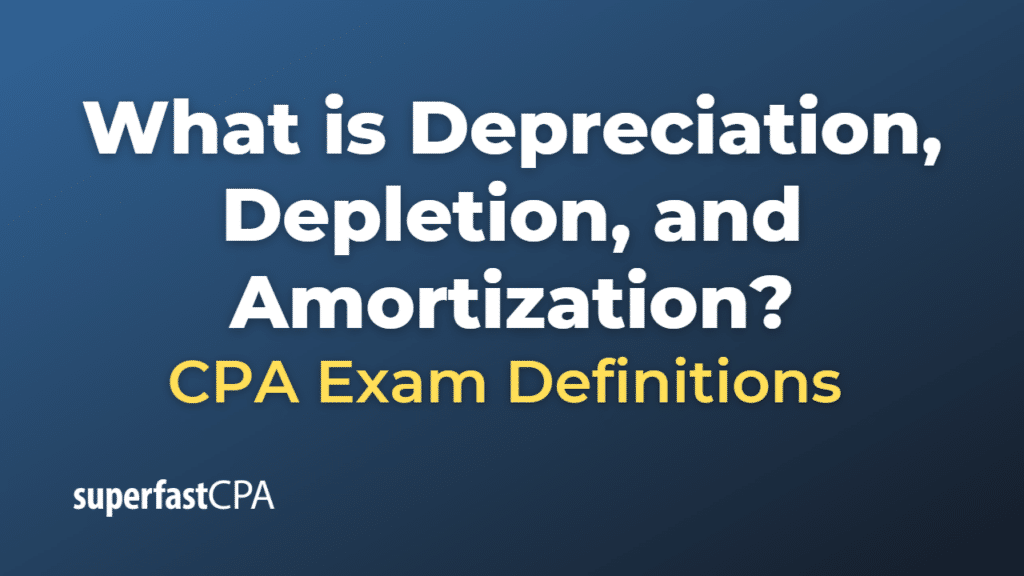Depreciation, Depletion, and Amortization
Depreciation, depletion, and amortization (often combined under the acronym “DD&A”) are three methods used by companies to spread out the cost of an asset over its useful life.
- Depreciation: This refers to prorating a tangible asset’s cost over its expected lifespan. Tangible assets include physical assets like machinery, equipment, vehicles, and buildings. For example, if a company buys a machine for $100,000 and expects it to last for 10 years, it might choose to depreciate the machine at a rate of $10,000 per year.
- Depletion: This is similar to depreciation, but it’s used for natural resources, like timber, oil, and minerals. Companies take the cost associated with procuring these resources and spread it out over the total expected output. For example, if a mining company invests $1 million to develop a mine, and expects to extract 500,000 tons of ore, then it would deplete the cost of the mine by $2 per ton of ore extracted.
- Amortization: This is used for intangible assets, like patents, copyrights, goodwill, and software costs. These assets have a specific lifetime and lose value over time, similar to tangible assets. The cost of these assets is spread out over their useful legal or economic life. For example, if a company buys a patent for $100,000 and the patent has a legal lifespan of 20 years, the company might choose to amortize the patent at a rate of $5,000 per year.
Each of these methods help companies adhere to the matching principle, which states that all expenses should be matched in the same period as the revenues that they helped to generate. By using depreciation, depletion, and amortization, companies can better match the use of their assets with the revenue those assets generate.
Example of Depreciation, Depletion, and Amortization
- Depreciation:
Suppose a company purchases a machine for $200,000. The company expects the machine to have a useful life of 10 years, and after that, it can be sold for scrap (salvage value) of $20,000. Using the straight-line depreciation method, the annual depreciation would be:
\(\frac{\text{Cost of Machine – Salvage Value}}{\text{Useful Life}} \)
\(= \frac{\$200,000 – \$20,000}{10} \)
\(= \text{\$18,000 per year} \)
So, the company would recognize a depreciation expense of $18,000 each year for 10 years. - Depletion:
Suppose a mining company spends $500,000 to develop a coal mine. It estimates that there are 250,000 tons of coal in the mine. The depletion rate per ton of coal extracted would be:
\(\frac{\text{Total Cost}}{\text{Total Estimated Output}} \)
\(= \frac{\$500,000}{\text{250,000 tons}} \)
\(= \text{\$2 per ton} \)
So, if the company mines and sells 50,000 tons of coal in the first year, the depletion expense would be $100,000 (50,000 tons * $2 per ton). - Amortization:
Suppose a tech company buys a software patent for $120,000. The patent has a legal lifespan of 12 years. Using straight-line amortization, the annual amortization would be:
\(\frac{\text{Total Cost}}{\text{Legal Life}} \)
\(= \frac{\$120,000}{12} \)
\(= \text{\$10,000 per year} \)
So, the company would recognize an amortization expense of $10,000 each year for 12 years.
These examples help illustrate how the cost of assets, both tangible and intangible, are spread over their useful lives in accordance with the matching principle in accounting.













